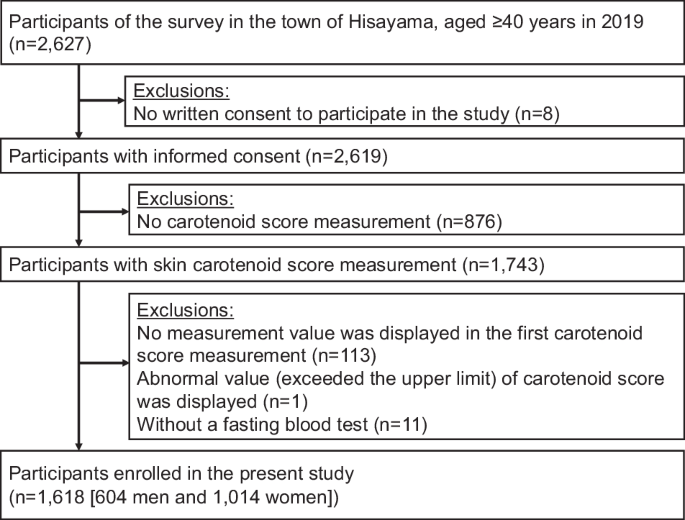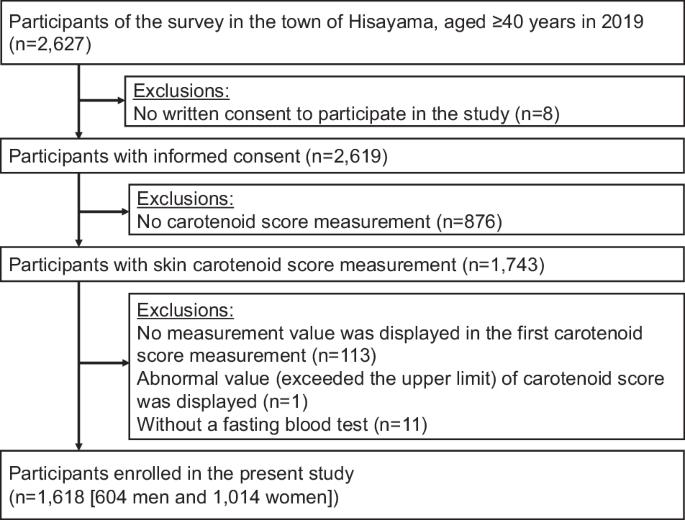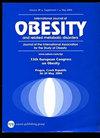Skin carotenoid scores and metabolic syndrome in a general Japanese population: the Hisayama study
IF 4.2
2区 医学
Q1 ENDOCRINOLOGY & METABOLISM
引用次数: 0
Abstract
Higher vegetable intake is being promoted as an initiative to prevent lifestyle-related diseases. Carotenoids are yellow or red pigment components and are widely present in vegetables. Since ingested carotenoids accumulate in the skin, skin carotenoid levels are a quantitative indicator of vegetable intake. Recently, noninvasive optical sensors for assessing skin carotenoid levels were developed. We here examined the association between skin carotenoid scores measured using optical sensors and the presence of metabolic syndrome. A total of 1618 individuals (604 men and 1014 women) aged ≥ 40 years (mean age 63.1 years) participated in the study. Skin carotenoid scores were determined using a noninvasive optical sensor based on multiple spatially resolved reflectance spectroscopy. Metabolic syndrome was defined based on the Joint Scientific Statement criteria developed by six international scientific societies. Multivariable-adjusted logistic regression models were used. The prevalence of metabolic syndrome was 31.3% (n = 506). A remarkably strong association was found between higher skin carotenoid scores and lower prevalence of metabolic syndrome after adjusting for confounders. The multivariable-adjusted odds ratio for the presence of metabolic syndrome in individuals with the highest quartile of skin carotenoid scores was 0.39 (95% confidence interval, 0.28–0.55) compared to those with the lowest quartile. Our findings suggest that higher skin carotenoid scores measured by non-invasive optimal sensors are significantly associated with a lower likelihood of having metabolic syndrome in the general Japanese population.


日本普通人群的皮肤类胡萝卜素评分与代谢综合征:久山研究。
背景:增加蔬菜摄入量是预防与生活方式有关的疾病的一项举措。类胡萝卜素是黄色或红色的色素成分,广泛存在于蔬菜中。由于摄入的类胡萝卜素会在皮肤中积累,因此皮肤类胡萝卜素水平是蔬菜摄入量的量化指标。最近,开发出了用于评估皮肤类胡萝卜素水平的无创光学传感器。我们在此研究了使用光学传感器测量的皮肤类胡萝卜素得分与是否存在代谢综合征之间的关联:共有 1618 人(男性 604 人,女性 1014 人)参加了研究,年龄≥ 40 岁(平均年龄 63.1 岁)。皮肤类胡萝卜素评分是通过基于多重空间分辨反射光谱的无创光学传感器测定的。代谢综合征的定义基于六个国际科学协会制定的联合科学声明标准。采用多变量调整逻辑回归模型:结果:代谢综合征的发病率为 31.3%(n = 506)。在对混杂因素进行调整后,发现较高的皮肤类胡萝卜素得分与较低的代谢综合征患病率之间存在明显的关联。经多变量调整后,皮肤类胡萝卜素得分最高四分位数的人与最低四分位数的人相比,出现代谢综合征的几率比为 0.39(95% 置信区间,0.28-0.55):我们的研究结果表明,在日本普通人群中,通过无创最佳传感器测量的皮肤类胡萝卜素得分越高,患代谢综合征的可能性就越低。
本文章由计算机程序翻译,如有差异,请以英文原文为准。
求助全文
约1分钟内获得全文
求助全文
来源期刊

International Journal of Obesity
医学-内分泌学与代谢
CiteScore
10.00
自引率
2.00%
发文量
221
审稿时长
3 months
期刊介绍:
The International Journal of Obesity is a multi-disciplinary forum for research describing basic, clinical and applied studies in biochemistry, physiology, genetics and nutrition, molecular, metabolic, psychological and epidemiological aspects of obesity and related disorders.
We publish a range of content types including original research articles, technical reports, reviews, correspondence and brief communications that elaborate on significant advances in the field and cover topical issues.
 求助内容:
求助内容: 应助结果提醒方式:
应助结果提醒方式:


